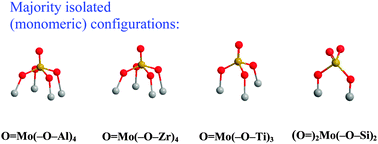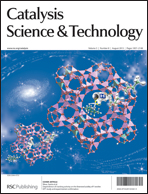On the configuration, molecular structure and vibrational properties of MoOx sites on alumina, zirconia, titania and silica†
Abstract
The article addresses the critical molecular structural issue of differentiating between the mono-oxo (Mo![[double bond, length as m-dash]](https://www.rsc.org/images/entities/char_e001.gif) O) and di-oxo [Mo(
O) and di-oxo [Mo(![[double bond, length as m-dash]](https://www.rsc.org/images/entities/char_e001.gif) O)2] configurations as well as the most plausible structures for the oxo-molybdenum [(MoOx)n] sites (including aspects related to coordination number of Mo and extent of association/
O)2] configurations as well as the most plausible structures for the oxo-molybdenum [(MoOx)n] sites (including aspects related to coordination number of Mo and extent of association/


 Please wait while we load your content...
Please wait while we load your content...